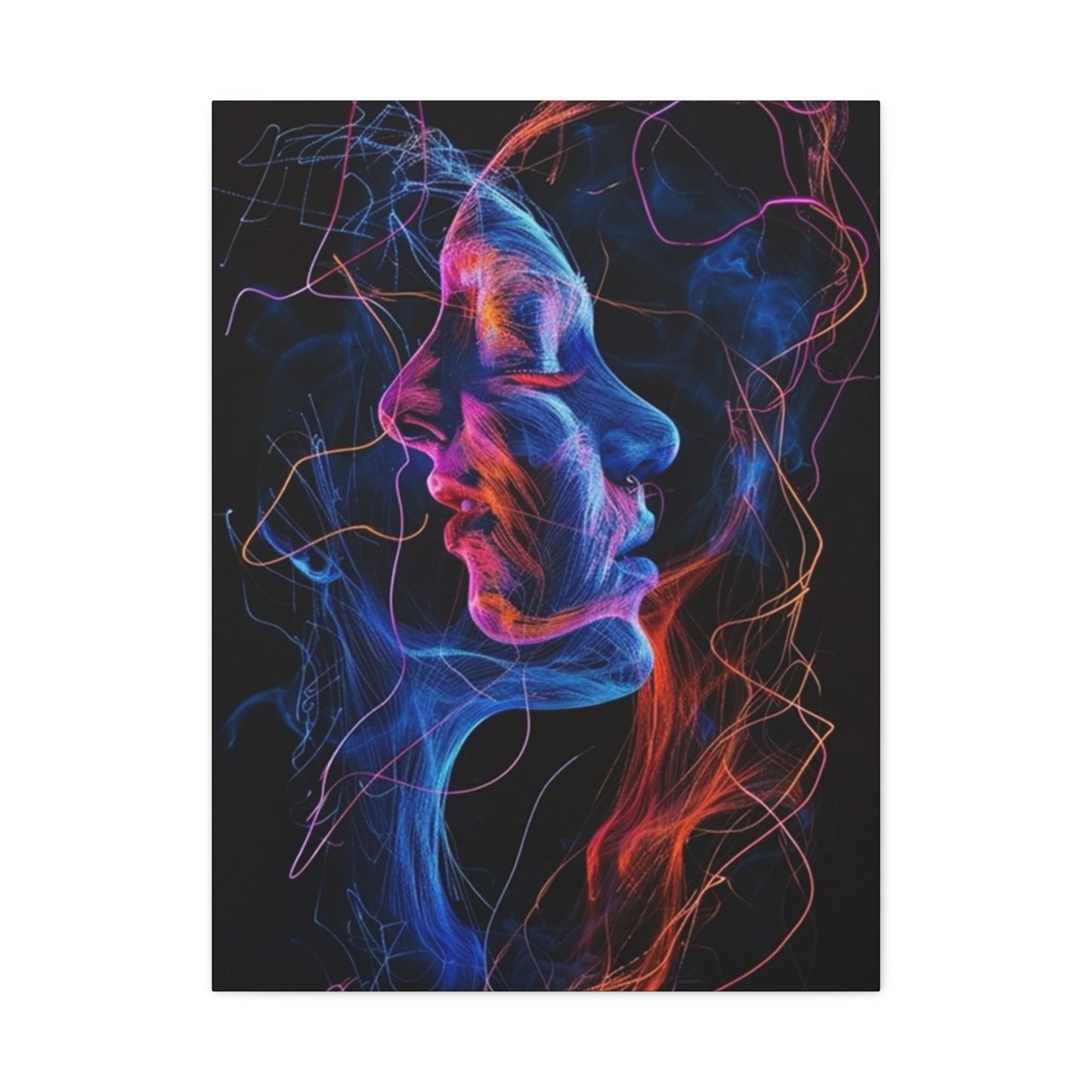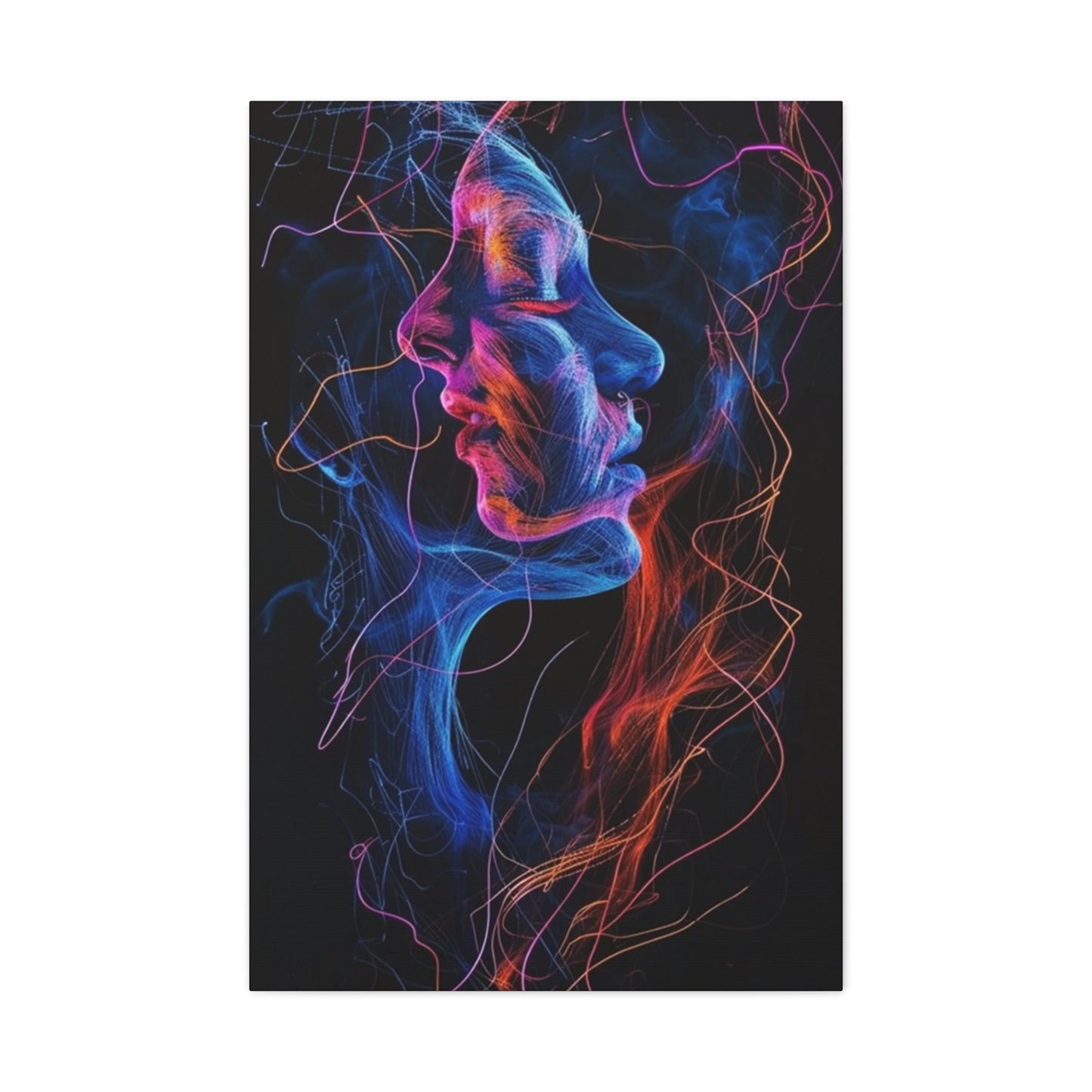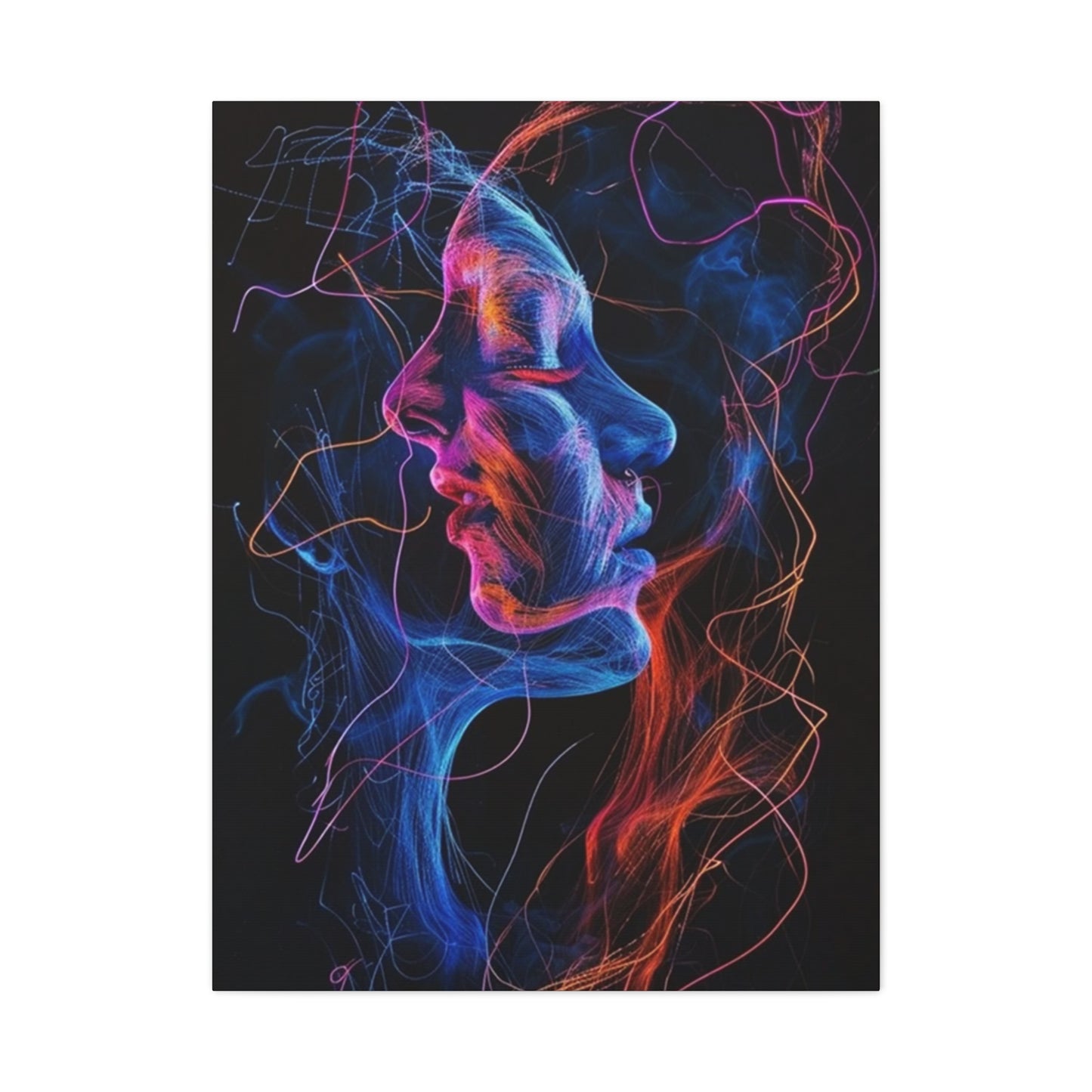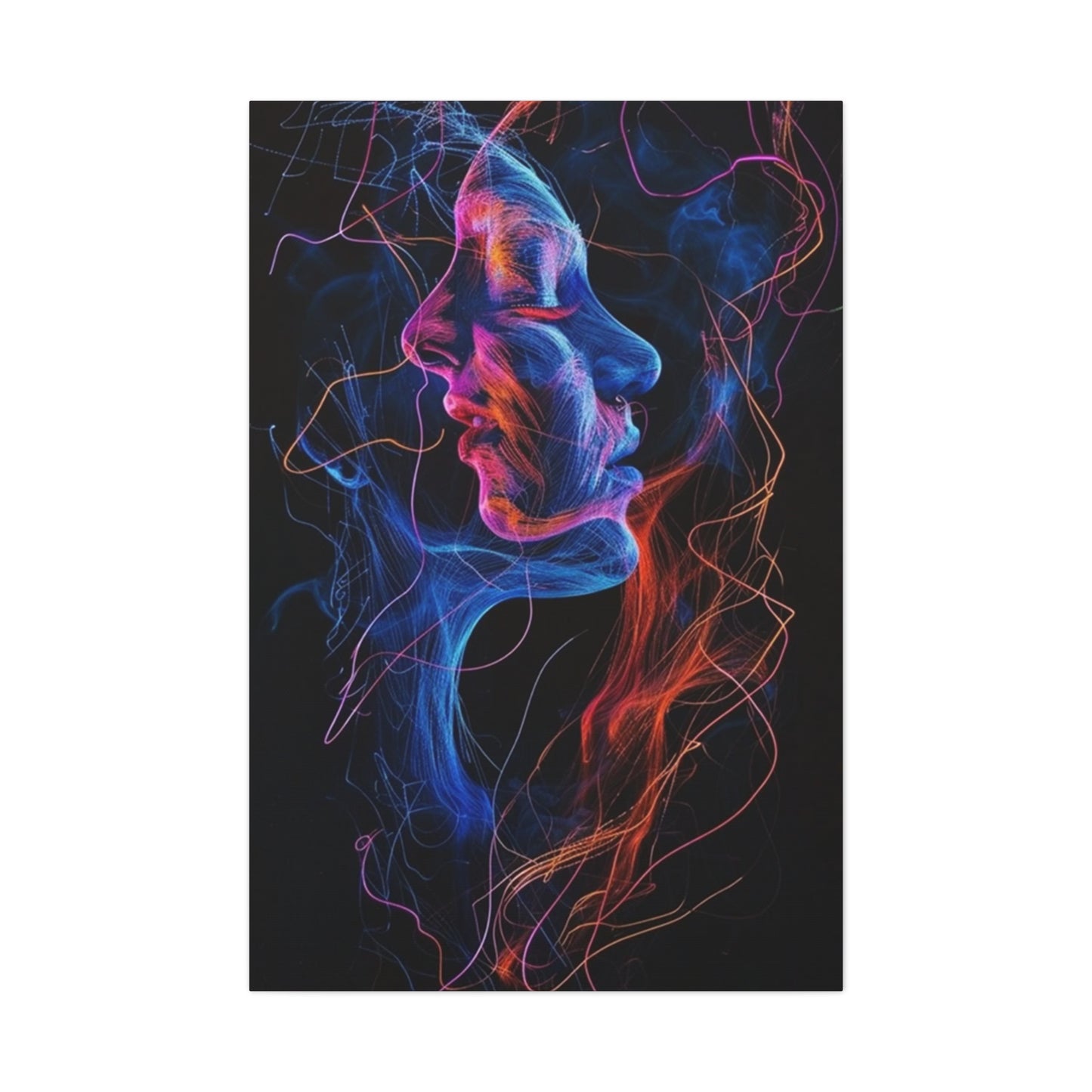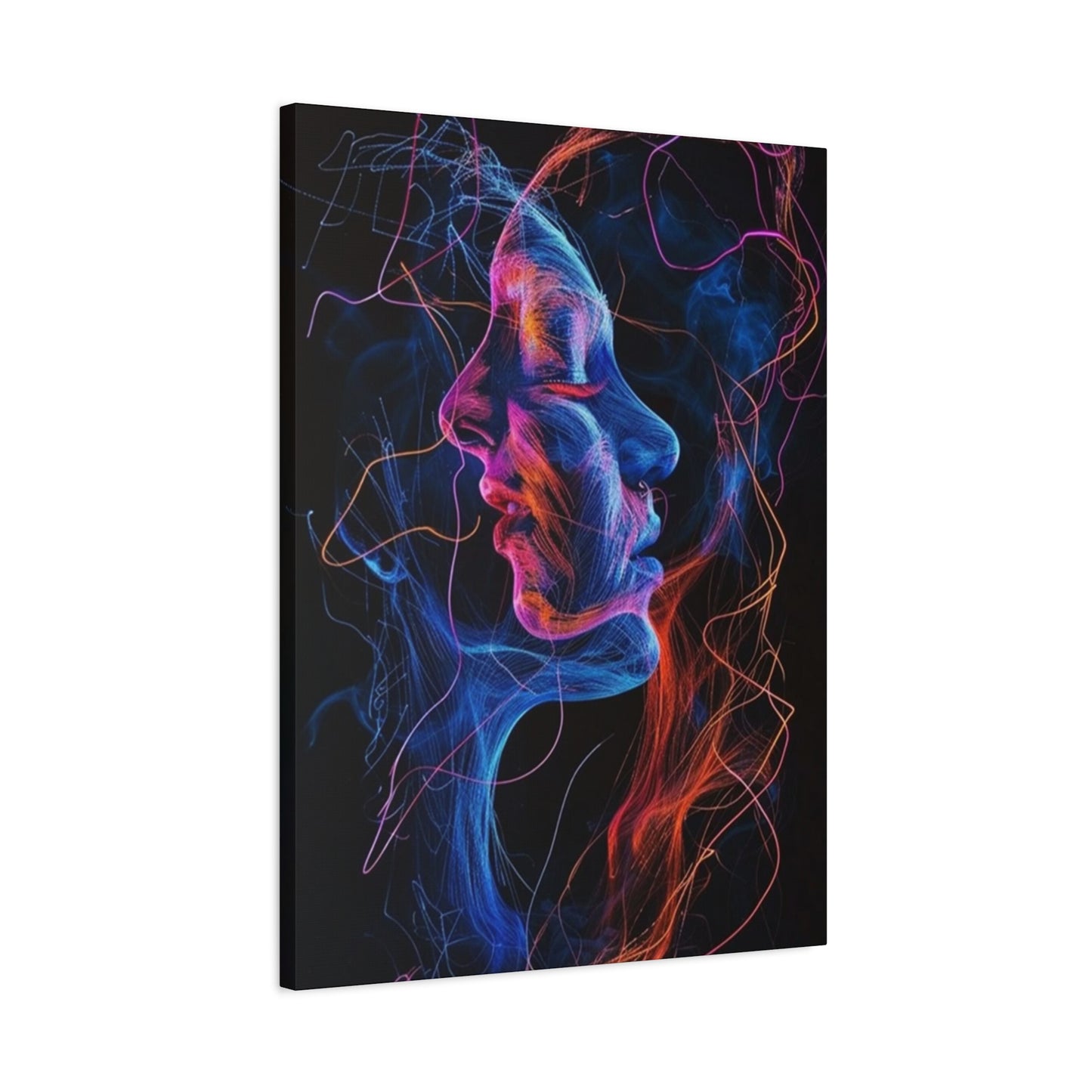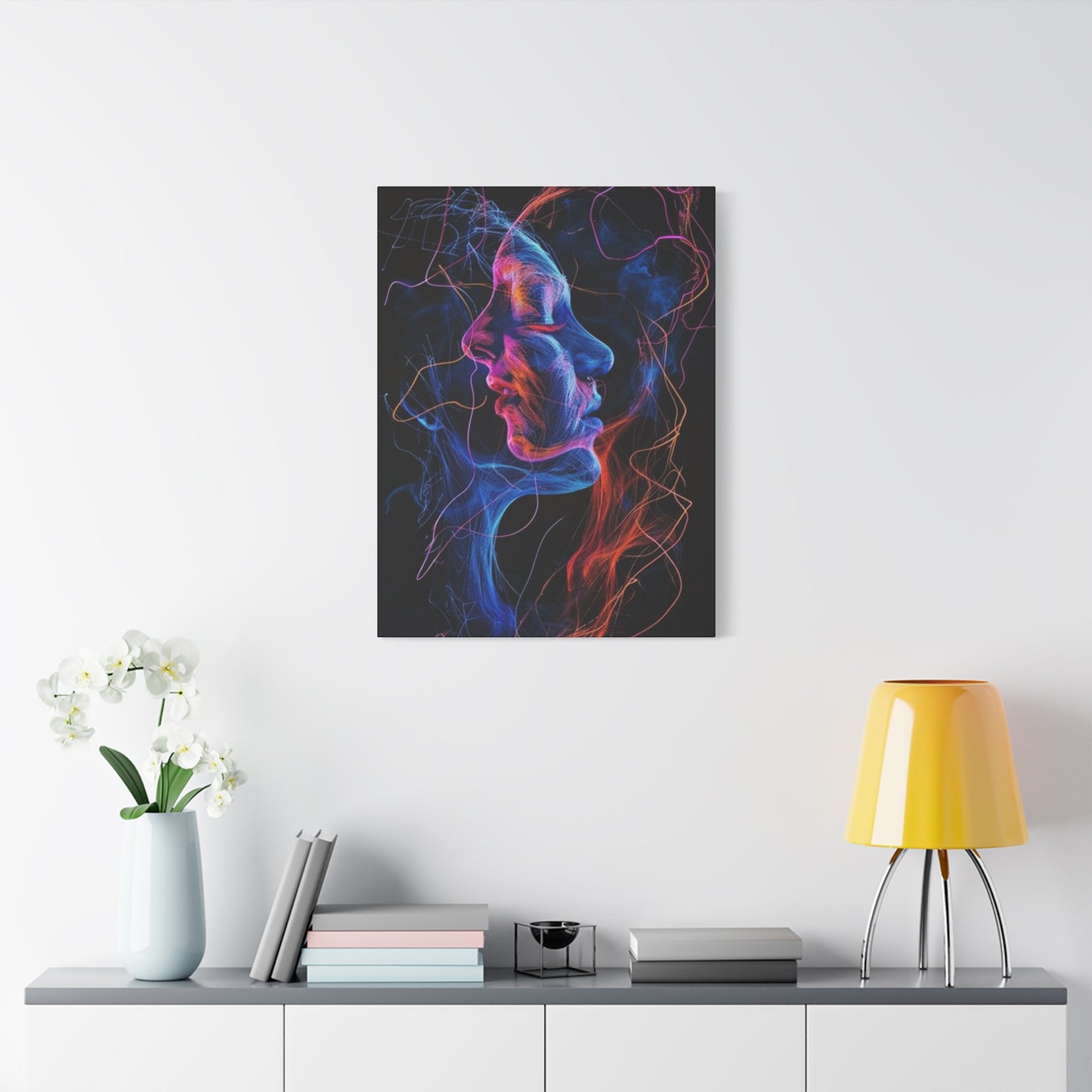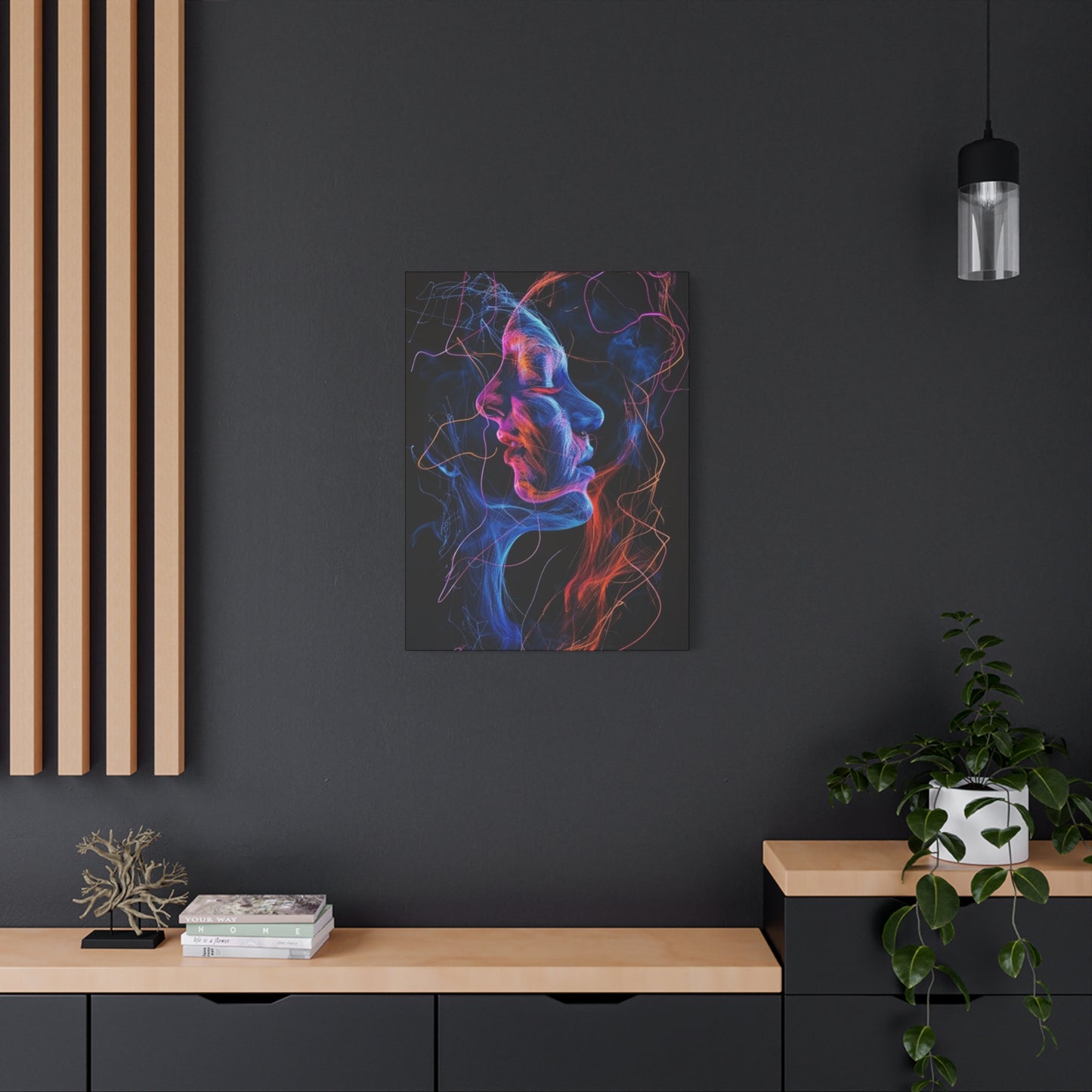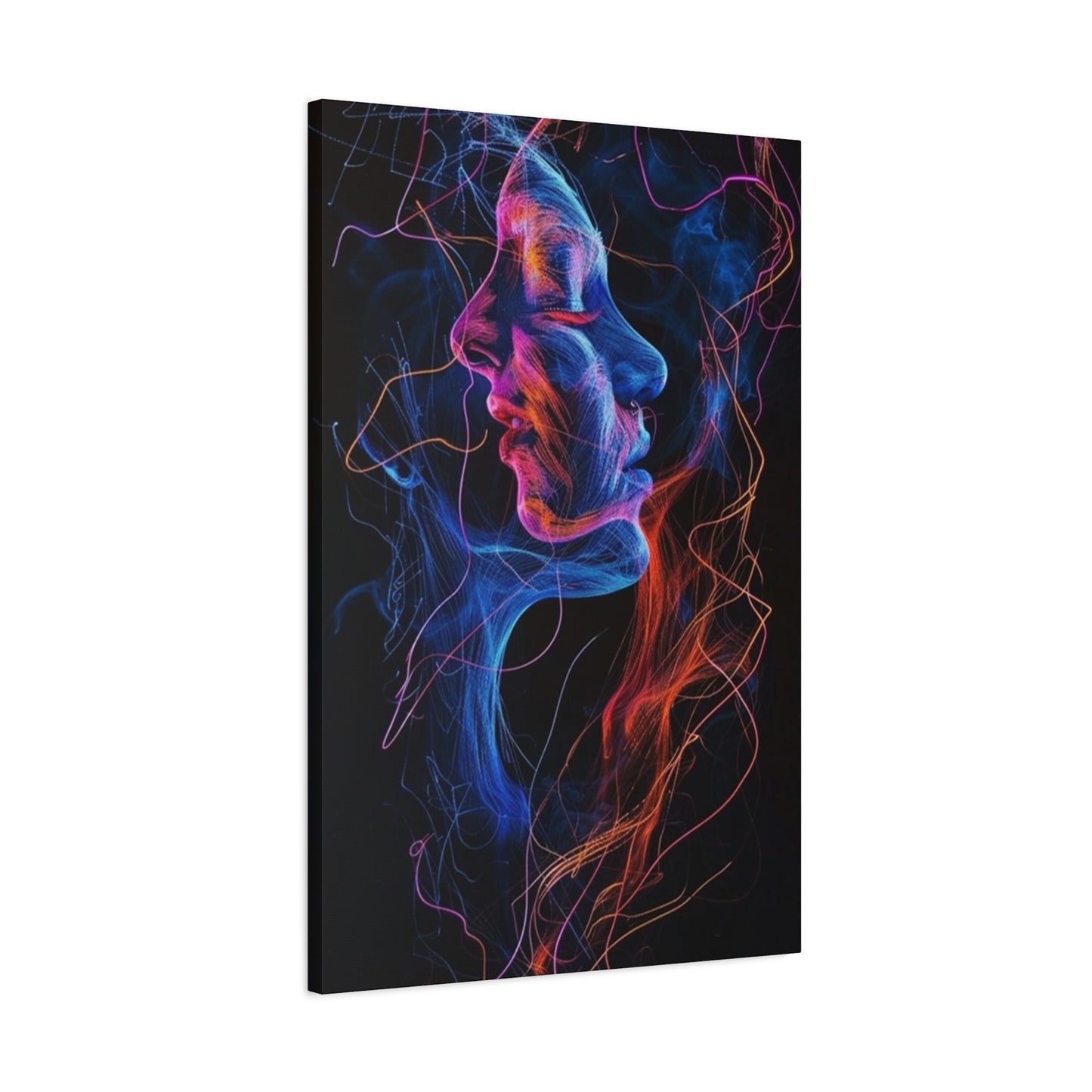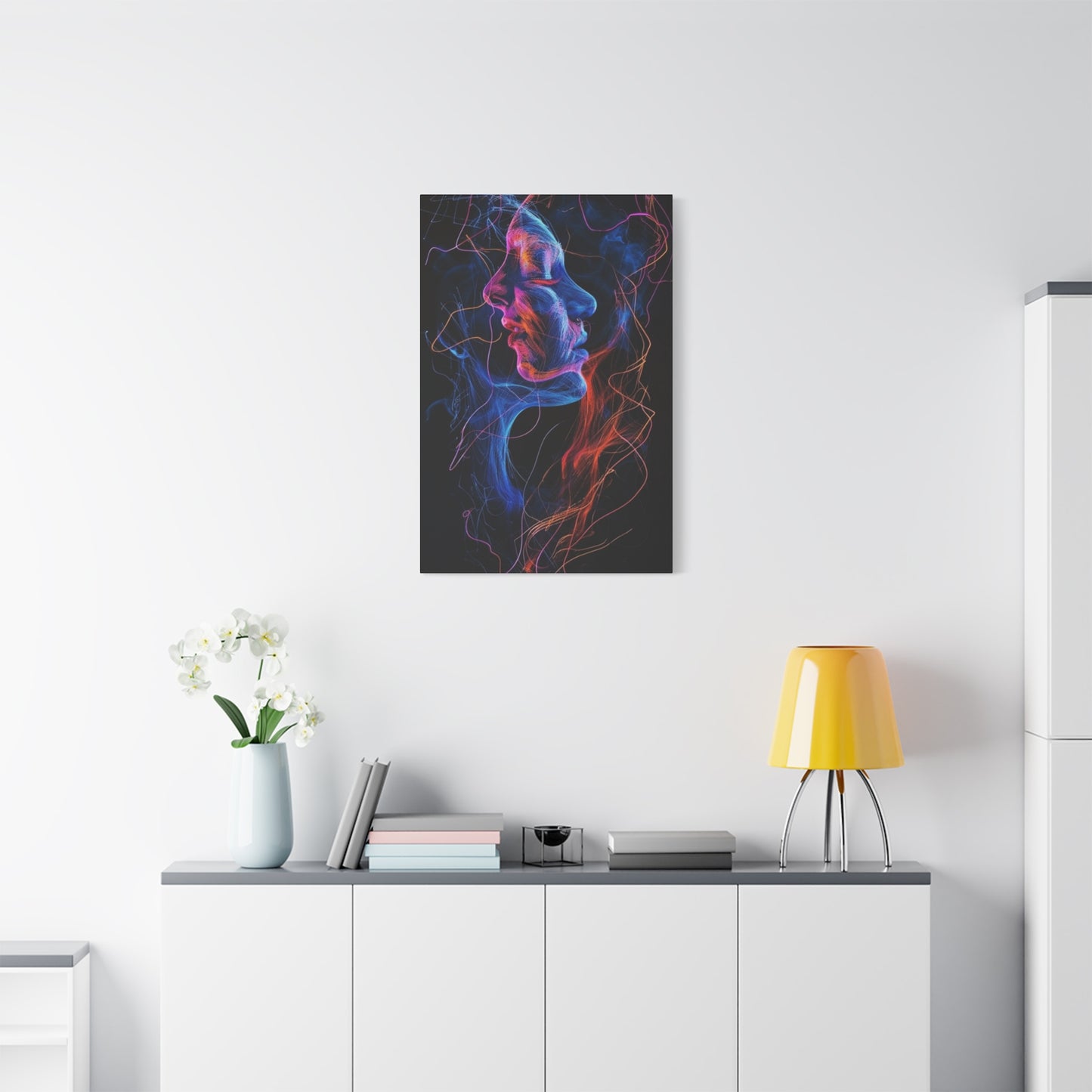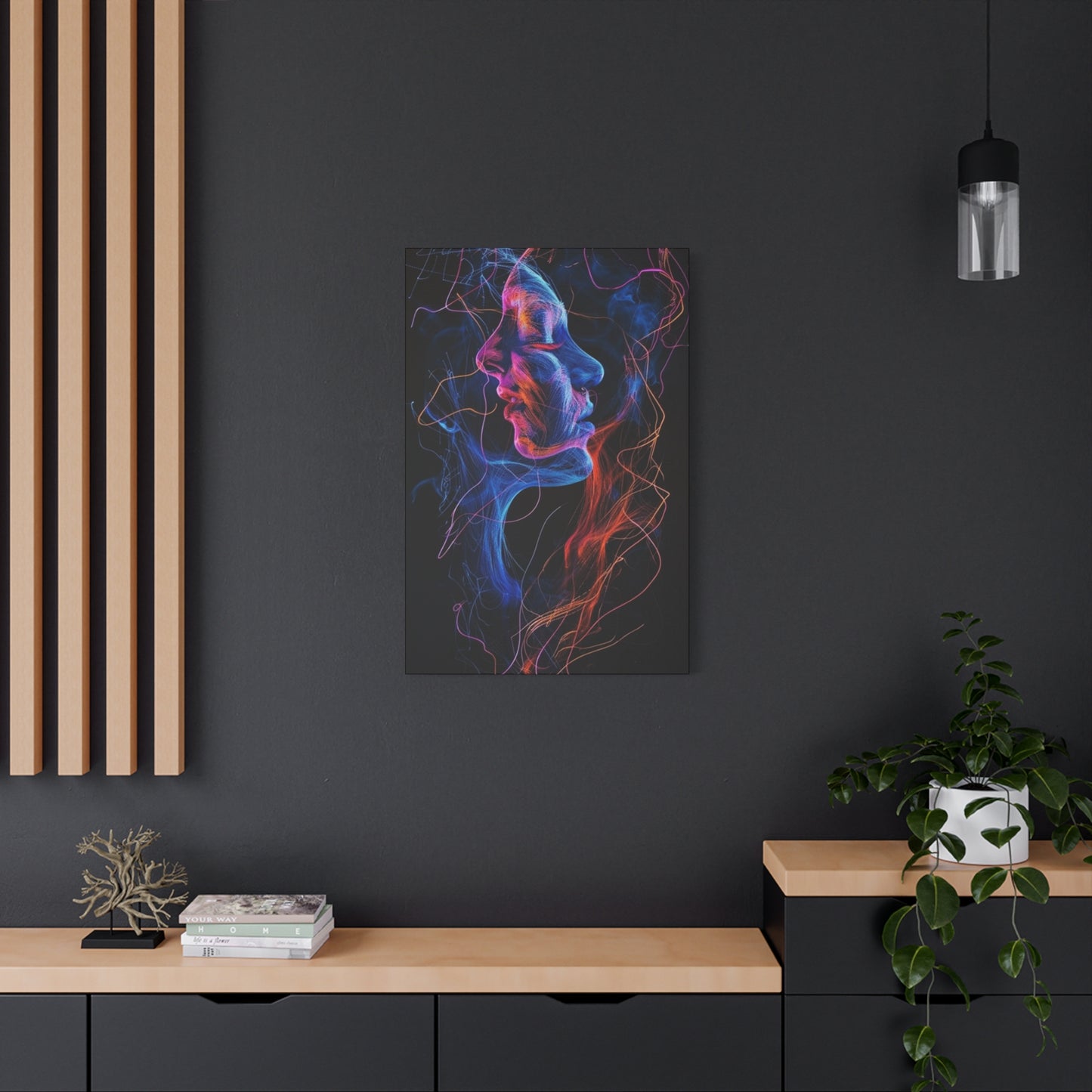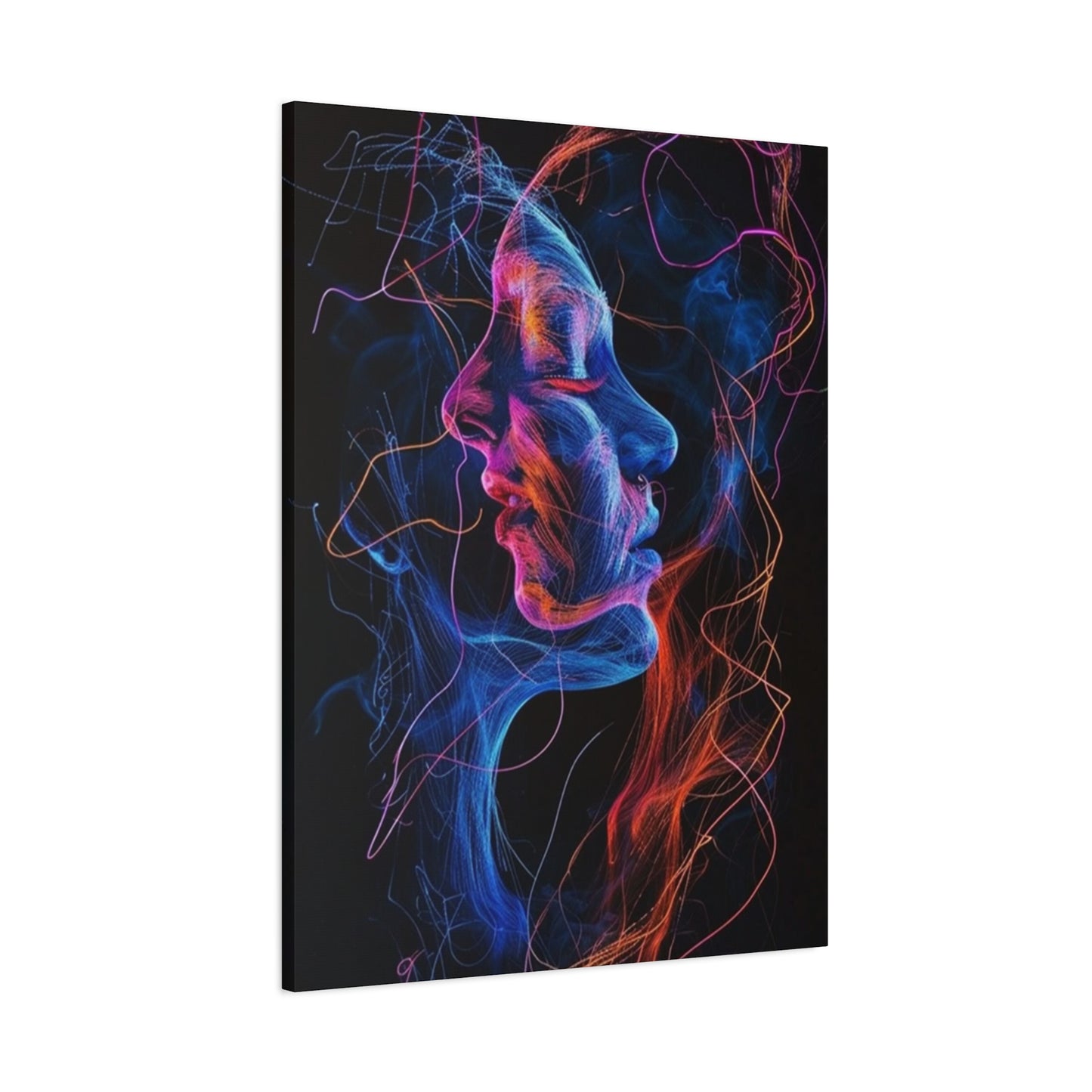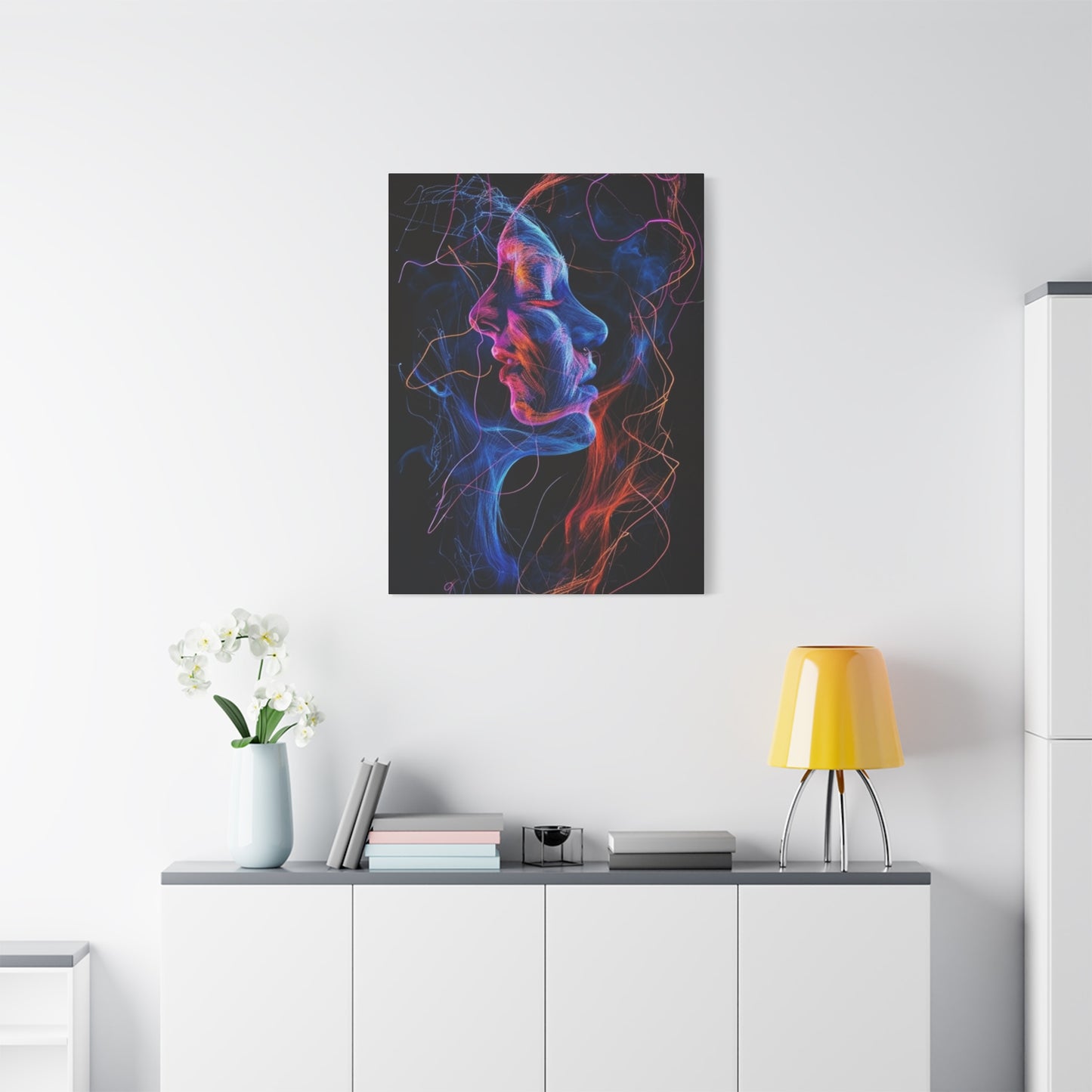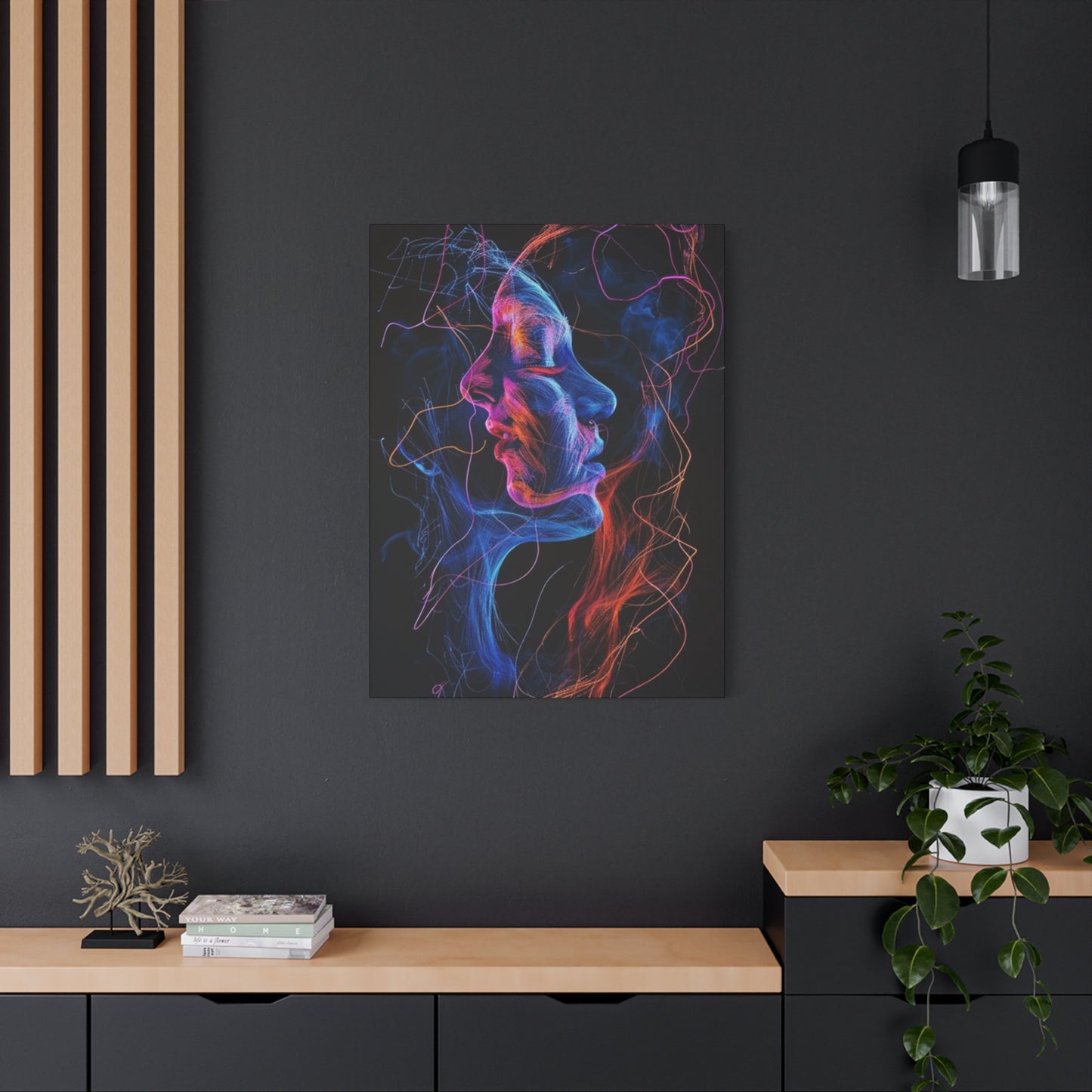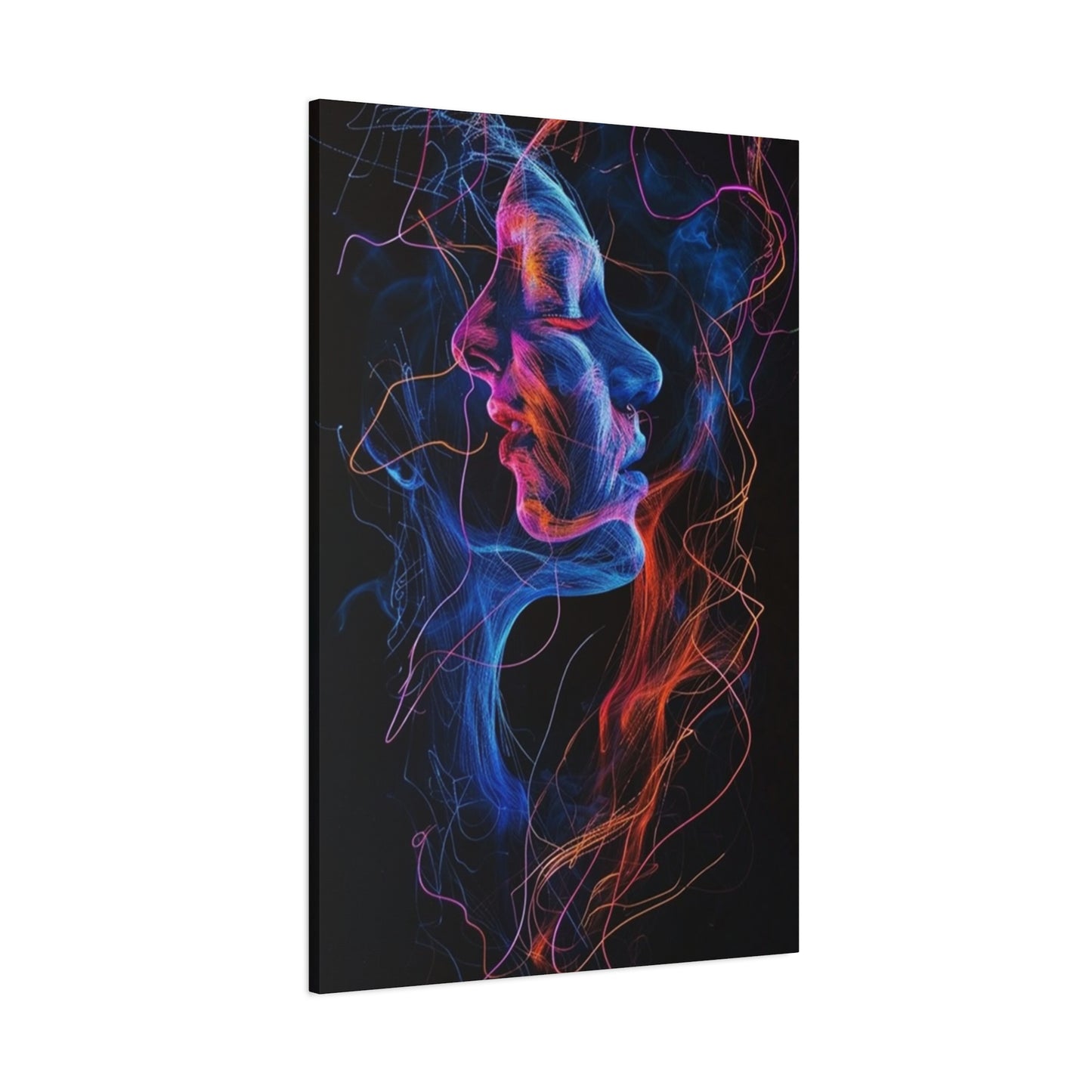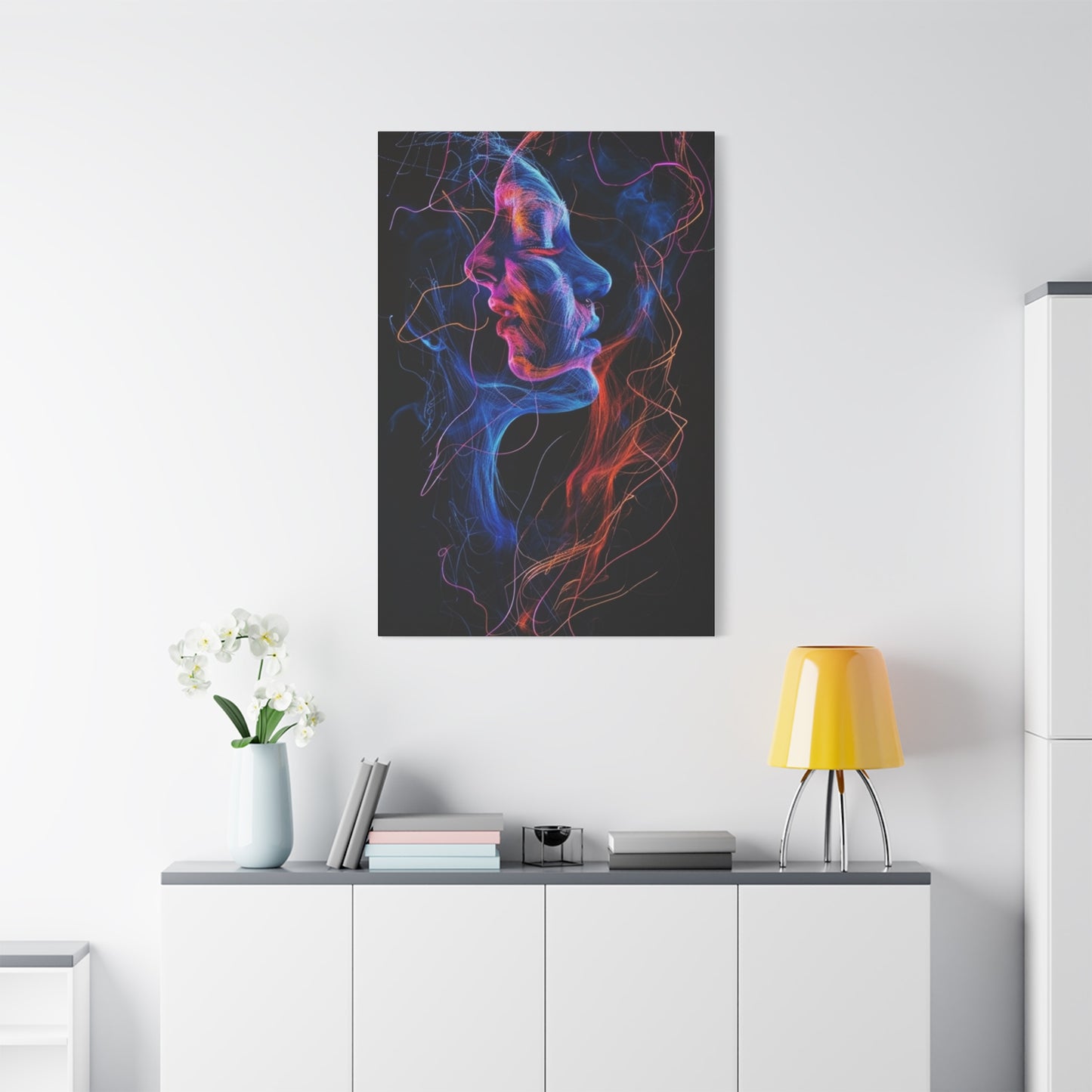Captivating Female Abstract Wall Art: Creative Expression Through Feminine Artistry
The artistic world has witnessed a remarkable renaissance in female abstract wall art, where creative expression meets feminine empowerment through visual storytelling. This captivating art form represents more than mere decoration; it embodies the essence of feminine energy, creativity, and artistic vision that resonates deeply with contemporary audiences. Female abstract wall art has emerged as a powerful medium that celebrates womanhood while challenging traditional artistic boundaries, creating pieces that speak to the soul and inspire meaningful conversations about identity, strength, and beauty.
Contemporary artists who focus on female abstract compositions bring unique perspectives that reflect diverse experiences, emotions, and cultural backgrounds. These artworks transcend conventional representation, using color, form, and texture to convey complex narratives about the female experience. The abstract nature of these pieces allows viewers to interpret and connect with the artwork on personal levels, creating intimate relationships between the observer and the artistic expression.
The growing popularity of female abstract wall art reflects broader cultural shifts toward recognizing and celebrating feminine perspectives in artistic discourse. Museums, galleries, and private collectors increasingly seek out works that explore themes of femininity, empowerment, and identity through abstract means. This trend has created opportunities for emerging female artists to gain recognition while contributing to important conversations about representation in contemporary art.
Female abstract wall art encompasses various styles, techniques, and approaches, from bold geometric compositions to fluid organic forms that suggest natural feminine curves and movement. Artists employ different media, including acrylic paints, mixed media, digital techniques, and experimental materials to create works that challenge viewers' perceptions and invite deeper contemplation. The versatility of abstract expression allows artists to explore themes ranging from motherhood and relationships to professional achievements and personal growth.
Discovering the Artistic Evolution of Feminine Abstract Expression
The evolution of feminine abstract expression represents a significant milestone in art history, marking the transition from traditional representational works to bold, interpretive pieces that celebrate female creativity and perspective. This artistic movement has roots in the early 20th century when pioneering female artists began challenging established norms and exploring new forms of visual communication. The development of abstract art provided women artists with unprecedented freedom to express their experiences, emotions, and worldviews without conforming to conventional expectations or limitations.
Historical context reveals that female artists faced numerous barriers in gaining recognition within male-dominated art institutions. However, the abstract movement offered opportunities for women to establish unique artistic voices and challenge traditional power structures within the art world. Many influential female abstract artists emerged during this period, creating groundbreaking works that would later influence generations of artists and reshape artistic discourse.
The progression from early abstract pioneers to contemporary female artists demonstrates remarkable growth in both technical sophistication and thematic exploration. Modern female abstract artists draw inspiration from diverse sources, including personal experiences, cultural heritage, social movements, and global events. This rich tapestry of influences results in artworks that reflect the complexity and diversity of contemporary feminine experience while honoring the legacy of earlier artistic pioneers.
Contemporary female abstract wall art incorporates elements from various artistic traditions, including expressionism, surrealism, and minimalism. Artists skillfully blend these influences to create unique visual languages that speak to modern audiences while maintaining connections to historical artistic movements. The result is a dynamic and evolving art form that continues to push boundaries and explore new possibilities for creative expression.
The digital age has further transformed feminine abstract expression, providing artists with new tools and platforms for creating and sharing their work. Digital techniques allow for experimentation with color, texture, and composition in ways previously impossible with traditional media. Social media platforms and online galleries have democratized access to art, enabling female abstract artists to reach global audiences and build communities around their work.
Bold and Beautiful: Celebrating Female Abstract Art Pieces
Female abstract art pieces represent a bold departure from conventional artistic expression, embracing vibrant colors, dynamic compositions, and innovative techniques that capture the essence of feminine strength and beauty. These works challenge viewers to look beyond surface appearances and engage with deeper meanings embedded within abstract forms and symbolic representations. The boldness of female abstract art lies not only in its visual impact but also in its willingness to address complex themes and emotions through non-traditional artistic approaches.
Contemporary female abstract artists demonstrate remarkable courage in their willingness to experiment with unconventional materials, techniques, and subject matter. Many artists incorporate mixed media elements, including textiles, found objects, and digital components, to create multi-dimensional works that engage viewers on multiple sensory levels. This experimental approach reflects the innovative spirit that characterizes much of contemporary female abstract art, where traditional boundaries between different art forms become fluid and permeable.
The beauty of female abstract art pieces often emerges from the interplay between contrasting elements, such as rough and smooth textures, warm and cool colors, or geometric and organic forms. Artists skillfully manipulate these contrasts to create visual tension and emotional resonance that draws viewers into deeper contemplation of the work's meaning and significance. The sophisticated use of color theory and composition principles demonstrates the high level of technical skill and artistic knowledge that contemporary female abstract artists possess.
Many female abstract art pieces explore themes related to identity, relationships, and personal growth through symbolic representation and metaphorical imagery. Artists use abstract forms to suggest rather than explicitly depict these themes, allowing viewers to bring their own experiences and interpretations to the work. This approach creates opportunities for meaningful dialogue between the artwork and its audience, fostering deeper understanding and appreciation for the artistic vision being expressed.
The scale and presentation of female abstract art pieces vary significantly, from intimate works suitable for residential settings to large-scale installations designed for public or commercial environments. Artists consider the intended viewing context when creating their works, ensuring that the piece's impact and message remain effective regardless of its final location. This thoughtful approach to scale and presentation demonstrates the professional sophistication of contemporary female abstract artists and their commitment to creating meaningful artistic experiences.
Contemporary Trends in Female Abstract Art for Modern Living
Contemporary trends in female abstract art reflect evolving aesthetic preferences and changing lifestyle patterns that influence how people interact with art in their daily lives. Modern living environments increasingly embrace open floor plans, minimalist design principles, and flexible functionality that requires artwork to serve multiple purposes beyond mere decoration. Female abstract artists have responded to these trends by creating works that complement contemporary design sensibilities while maintaining their artistic integrity and emotional impact.
Color palettes in contemporary female abstract art often reflect current design trends, incorporating earth tones, muted pastels, and sophisticated neutral combinations that harmonize with modern architectural elements. Artists demonstrate remarkable skill in creating works that enhance contemporary living environments without overwhelming or competing with existing design elements. This balance between artistic expression and environmental compatibility represents a significant evolution in how abstract art functions within residential and commercial settings.
The incorporation of sustainable materials and eco-friendly production methods has become increasingly important in contemporary female abstract art. Many artists prioritize environmental responsibility by using recycled materials, non-toxic paints, and sustainable production processes. This commitment to environmental stewardship reflects broader cultural values and demonstrates how artistic practices can align with social responsibility while maintaining creative excellence.
Digital integration represents another significant trend in contemporary female abstract art, with many artists exploring the possibilities offered by digital printing, projection mapping, and interactive technologies. These innovations allow for new forms of artistic expression while making high-quality art more accessible to broader audiences. Digital platforms also enable artists to experiment with animated elements and changing compositions that respond to environmental conditions or viewer interaction.
The democratization of art through online platforms and print-on-demand services has transformed how female abstract art reaches its audience. Artists can now bypass traditional gallery systems and connect directly with collectors and art enthusiasts worldwide. This direct connection has led to more personalized artistic relationships and has enabled artists to create custom works that reflect individual preferences and specific environmental requirements.
Exploring Abstract Female Figures in Contemporary Art
Abstract female figures in contemporary art represent a sophisticated artistic approach that captures the essence of feminine form and energy through non-representational means. Artists working in this genre move beyond literal depiction to explore the emotional, spiritual, and psychological dimensions of feminine experience through carefully orchestrated visual elements. These works challenge traditional notions of figure representation while celebrating the complexity and depth of feminine identity in contemporary culture.
The interpretation of female figures through abstract means requires exceptional artistic skill and conceptual sophistication. Artists must distill essential qualities of feminine form and presence into visual elements that communicate effectively without relying on realistic representation. This process involves deep understanding of both formal artistic principles and the cultural significance of feminine imagery in contemporary society.
Color choices play crucial roles in abstract female figure representations, with artists using specific palettes to evoke particular emotions or associations related to feminine experience. Warm earth tones might suggest nurturing and groundedness, while vibrant blues and purples could represent creativity and spiritual awakening. The psychological impact of color in abstract female figure work demonstrates the sophisticated understanding that contemporary artists possess regarding the relationship between visual elements and emotional response.
Compositional strategies in abstract female figure art often emphasize movement, flow, and organic forms that suggest rather than explicitly depict feminine characteristics. Artists might use sweeping curves, rhythmic patterns, or layered transparencies to create impressions of grace, strength, or mystery associated with feminine presence. These compositional approaches require careful consideration of visual balance and spatial relationships to ensure effective communication of the intended artistic message.
The cultural significance of abstract female figure art extends beyond aesthetic considerations to address important social and political themes. Many contemporary artists use this medium to explore issues related to gender equality, body positivity, and feminine empowerment. The abstract nature of these works allows for nuanced exploration of complex themes while avoiding the potential limitations or controversies that might arise from more literal representations.
The Elegance of Female Abstract Wall Art in Modern Contexts
The elegance inherent in female abstract wall art emerges from the sophisticated interplay of formal elements combined with meaningful content that resonates with contemporary audiences. This elegance manifests not through decorative excess but through refined simplicity and thoughtful composition that demonstrates mastery of artistic principles. Contemporary female abstract artists achieve elegance by carefully balancing visual complexity with clarity of expression, creating works that are both intellectually engaging and aesthetically pleasing.
Sophisticated color harmonies contribute significantly to the elegant quality of female abstract wall art. Artists demonstrate advanced understanding of color theory, creating subtle gradations and unexpected combinations that surprise and delight viewers while maintaining overall visual coherence. The use of limited color palettes often enhances elegance by focusing attention on form, texture, and composition rather than relying on chromatic impact for visual interest.
Textural considerations play important roles in creating elegant female abstract wall art. Artists employ various techniques to create surface interest, from impasto applications that create physical texture to glazing methods that produce optical effects. The skillful manipulation of texture adds dimensional quality to abstract compositions while contributing to the overall sense of refinement and artistic sophistication that characterizes elegant works.
The integration of negative or white areas within compositions demonstrates advanced compositional understanding and contributes to the elegant quality of female abstract wall art. Artists use these quiet areas to provide visual rest and to emphasize the importance of selected design elements. This restraint and selectivity in compositional choices reflects mature artistic judgment and contributes to the overall sense of elegance and sophistication.
Contemporary presentation methods for female abstract wall art have evolved to enhance the elegant qualities of these works. Custom framing, professional lighting, and thoughtful installation practices ensure that artworks are displayed to maximum advantage. The attention to presentation details reflects the professional standards that contemporary female abstract artists maintain and contributes to the overall aesthetic impact of their work.
Colorful Female Abstract Art for Contemporary Environments
Colorful female abstract art brings vibrancy and energy to contemporary environments while maintaining sophisticated artistic standards and meaningful content. The strategic use of color in these works goes beyond mere decoration to create emotional resonance and visual impact that enhances the experience of living and working environments. Contemporary female artists demonstrate exceptional skill in manipulating color relationships to create works that are both visually striking and emotionally satisfying.
The psychology of color plays crucial roles in how colorful female abstract art functions within contemporary environments. Different colors evoke specific emotional responses and can influence mood, energy levels, and overall well-being. Artists working in this medium demonstrate sophisticated understanding of color psychology and use this knowledge to create works that contribute positively to environmental quality and user experience.
Technical mastery in color application distinguishes professional colorful female abstract art from amateur efforts. Artists employ various techniques including layering, blending, and optical mixing to create complex color interactions that change depending on viewing conditions and observer position. This technical sophistication ensures that colorful works maintain visual interest over time and continue to reward careful observation and contemplation.
The relationship between colorful female abstract art and architectural elements requires careful consideration to ensure successful integration within contemporary environments. Artists and designers must consider existing color schemes, lighting conditions, and spatial proportions when selecting and positioning colorful artworks. Successful integration enhances both the artwork and the environment, creating synergistic relationships that benefit all elements within the visual composition.
Contemporary production methods for colorful female abstract art include both traditional and digital techniques that enable artists to achieve precise color control and consistency. High-quality pigments and archival materials ensure that colorful works maintain their visual impact over time, while professional printing and reproduction methods make original colorful abstract art accessible to broader audiences without compromising quality standards.
Integrating Female Abstract Art with Contemporary Design Philosophies
The integration of female abstract art with contemporary design philosophies requires sophisticated understanding of both artistic principles and design theory to create harmonious and meaningful environments. Contemporary design philosophies emphasize functionality, sustainability, and human-centered approaches that must be carefully considered when incorporating abstract artworks into living and working environments. Successful integration enhances both the artistic impact of the work and the overall environmental quality.
Minimalist design philosophies present both opportunities and challenges for integrating female abstract art. The clean lines and simplified forms characteristic of minimalism can provide effective backdrops for abstract artworks while requiring careful attention to scale, color, and compositional relationships. Female abstract artists working within minimalist contexts often embrace restraint and selectivity in their compositional choices while maintaining emotional depth and visual interest.
Biophilic design principles, which emphasize connections to natural elements and processes, align well with many approaches to female abstract art that draw inspiration from organic forms and natural phenomena. Artists working within biophilic frameworks often incorporate earth tones, flowing forms, and textural elements that suggest natural processes and materials. This alignment creates opportunities for meaningful integration between artistic expression and environmental design philosophy.
Sustainable design practices increasingly influence both the creation and installation of female abstract art within contemporary environments. Artists consider environmental impact throughout the creative process, from material selection to production methods and eventual disposal or recycling. This holistic approach to sustainability reflects broader cultural values while maintaining artistic integrity and creative freedom.
The technological integration characteristic of smart home and office environments creates new opportunities for female abstract art that incorporates digital elements or responds to environmental conditions. Artists explore possibilities for artworks that change over time, respond to occupant behavior, or integrate with building systems to create dynamic and responsive environmental experiences.
Female Abstract Art That Celebrates Womanhood and Identity
Female abstract art that celebrates womanhood and identity represents a powerful form of cultural expression that addresses fundamental questions about gender, society, and personal experience through sophisticated artistic means. These works go beyond superficial treatment of feminine themes to explore complex psychological, social, and spiritual dimensions of women's experience in contemporary culture. Artists working in this genre demonstrate remarkable courage and skill in addressing challenging subject matter while maintaining artistic excellence and emotional authenticity.
The celebration of womanhood through abstract means requires sophisticated conceptual approaches that can communicate complex ideas without relying on literal representation. Artists use symbolic imagery, metaphorical compositions, and archetypal forms to explore themes related to motherhood, creativity, strength, and wisdom. The abstract nature of these works allows for multiple interpretations while maintaining core messages about the value and significance of feminine experience.
Identity exploration through female abstract art often addresses intersectional themes that recognize the diversity of women's experience across different cultural, racial, economic, and social backgrounds. Artists bring personal perspectives and cultural knowledge to their work while creating pieces that speak to universal aspects of feminine experience. This balance between personal and universal themes contributes to the broad appeal and cultural significance of identity-focused female abstract art.
The empowerment aspect of female abstract art that celebrates womanhood manifests through strong compositional choices, confident color applications, and bold formal decisions that reflect feminine strength and self-determination. Artists use visual elements to communicate messages about resilience, achievement, and the potential for positive change. These works serve as sources of inspiration and affirmation for viewers who see their own experiences reflected in abstract artistic expressions.
Contemporary feminist theory influences many approaches to female abstract art that celebrates womanhood, providing conceptual frameworks for exploring issues related to gender equality, reproductive rights, and economic justice. Artists engage with these theoretical perspectives while maintaining focus on creating visually compelling and emotionally resonant artworks that communicate effectively with diverse audiences.
Abstract Female Portraits: Revolutionary Art Movement Perspectives
Abstract female portraits represent a revolutionary departure from traditional portraiture conventions, challenging established approaches to representing feminine identity and experience through innovative artistic means. This movement reflects broader cultural shifts toward recognizing diverse perspectives and celebrating individual uniqueness while pushing the boundaries of what portraiture can achieve as an art form. Contemporary artists working in abstract female portraiture demonstrate exceptional creativity and technical skill in reimagining fundamental aspects of portrait representation.
The conceptual framework underlying abstract female portraits often emphasizes psychological and emotional characteristics over physical appearance, using visual elements to communicate inner experiences and personal qualities. Artists might use color to suggest mood or personality traits, employ texture to represent life experiences, or manipulate form to convey emotional states. This approach creates portraits that reveal more about their subjects than traditional realistic representation might achieve.
Technical innovations in abstract female portraiture include experimental approaches to medium, surface, and application methods that expand the possibilities for artistic expression. Artists work with unconventional materials, explore mixed-media combinations, and employ digital techniques to create unique visual effects and textures. These technical explorations reflect the innovative spirit that characterizes contemporary abstract portrait work and contribute to the ongoing evolution of portraiture as an art form.
The cultural significance of abstract female portraits extends beyond individual artistic achievement to address broader questions about representation, identity, and social justice. Many artists use this medium to challenge stereotypes, celebrate diversity, and promote greater understanding of women's experiences across different cultural and social contexts. The abstract nature of these works allows for nuanced exploration of complex themes while avoiding potential limitations associated with more literal approaches.
Contemporary exhibition and collection practices for abstract female portraits reflect growing recognition of their artistic and cultural importance. Museums and galleries increasingly feature these works in prominent exhibitions, while collectors seek out pieces that represent significant artistic achievement and cultural relevance. This institutional support contributes to the ongoing development and recognition of abstract female portraiture as a legitimate and important art movement.
Creating Focal Points Through Female Abstract Wall Art
The strategic use of female abstract wall art to create focal points within contemporary environments requires sophisticated understanding of visual hierarchy, spatial relationships, and psychological impact. Effective focal points draw attention while contributing to overall environmental harmony and supporting the intended function and atmosphere of particular locations. Artists and designers must consider multiple factors when selecting and positioning female abstract artworks to serve as focal points within residential and commercial environments.
Scale relationships play crucial roles in determining the effectiveness of female abstract wall art as focal points. Works must be appropriately sized for their intended locations, with sufficient presence to command attention without overwhelming surrounding elements. Artists create works in various scales to accommodate different architectural contexts, from intimate residential rooms to large commercial or institutional environments that require substantial artistic presence to achieve desired impact.
Color strategies for focal point applications often involve creating controlled contrast between the artwork and surrounding environmental elements. Artists might employ complementary color relationships, value contrasts, or chromatic intensity variations to ensure that their works achieve appropriate visual prominence without creating jarring or uncomfortable viewing experiences. The successful management of color relationships demonstrates artistic sophistication and contributes to overall environmental quality.
Compositional techniques used in female abstract wall art intended as focal points often emphasize dynamic movement, visual tension, or dramatic formal relationships that naturally draw viewer attention. Artists might use radiating compositions, asymmetrical balance, or contrasting textures to create visual interest and maintain viewer engagement over time. These compositional strategies must be balanced with environmental considerations to ensure successful integration with architectural and design elements.
Lighting considerations significantly impact the effectiveness of female abstract wall art as focal points. Natural and artificial lighting conditions influence color perception, create shadow patterns, and affect overall visual impact throughout different times of day and seasons. Professional installation often includes specialized lighting systems designed to optimize the presentation of focal point artworks while contributing to overall environmental lighting design.
Symbolism and Meaning in Female Abstract Wall Art
The symbolic dimensions of female abstract wall art provide layers of meaning that extend far beyond surface aesthetic appeal, creating works that engage viewers intellectually and emotionally while contributing to ongoing cultural conversations about gender, identity, and social change. Contemporary female artists demonstrate sophisticated understanding of symbolic systems and cultural references, incorporating these elements into abstract compositions that communicate complex ideas through visual means. The interpretation of symbolic content in abstract works requires active engagement from viewers, creating opportunities for personal discovery and meaningful dialogue.
Archetypal symbols frequently appear in female abstract wall art, drawing from universal human experiences and cultural traditions that transcend specific cultural or temporal boundaries. Artists might incorporate symbolic references to natural cycles, maternal relationships, or spiritual traditions while presenting these references through contemporary abstract visual languages. The use of archetypal symbols creates connections between individual artworks and broader human experiences, enhancing the universal appeal and cultural significance of abstract works.
Personal symbolism in female abstract wall art often reflects individual artist experiences and perspectives while communicating themes that resonate with broader audiences. Artists develop unique visual vocabularies that incorporate personal references, cultural background, and individual artistic vision into coherent symbolic systems. The development of personal symbolic languages demonstrates artistic maturity and contributes to the distinctive character that distinguishes individual artist work within the broader field of female abstract art.
Cultural symbolism embedded within female abstract wall art reflects diverse traditions and contemporary social movements that influence artistic expression. Artists might incorporate references to specific cultural practices, historical events, or contemporary social issues while presenting these references through abstract visual means that allow for multiple interpretations and personal connections. This approach enables artworks to address serious cultural themes while maintaining accessibility and visual appeal.
The evolution of symbolic meaning in female abstract wall art reflects changing cultural values and social conditions that influence how symbols are interpreted and understood. Contemporary viewers bring different knowledge and experiences to artistic interpretation than previous generations, creating opportunities for new meanings to emerge from existing works while inspiring artists to develop new symbolic approaches that reflect contemporary concerns and perspectives.
Discovering Unique Female Abstract Art from Emerging Artists
The contemporary art world witnesses remarkable creativity and innovation from emerging female abstract artists who bring fresh perspectives and experimental approaches to this dynamic medium. These artists often challenge established conventions while drawing inspiration from diverse cultural traditions, personal experiences, and contemporary social movements. The work of emerging artists contributes significantly to the ongoing evolution of female abstract art while offering collectors and enthusiasts opportunities to discover exceptional artworks before they achieve broader recognition.
Emerging female abstract artists frequently demonstrate exceptional technical skill combined with innovative conceptual approaches that distinguish their work within competitive contemporary art markets. Many artists pursue advanced artistic education or participate in residency programs that provide opportunities for experimentation and professional development. This combination of technical training and creative exploration results in works that demonstrate both artistic sophistication and fresh creative vision.
Digital platforms and social media have revolutionized how emerging female abstract artists share their work and build professional relationships. Artists can now reach global audiences without relying exclusively on traditional gallery representation, creating opportunities for direct engagement with collectors and art enthusiasts. This democratization of artistic promotion has led to greater diversity in the types of work that gain recognition and has enabled artists from different geographic and cultural backgrounds to participate in international art discourse.
Collaborative networks among emerging female abstract artists provide mutual support and professional development opportunities that contribute to individual artistic growth and collective advancement. These networks might include formal organizations, informal social groups, or online communities that facilitate knowledge sharing, exhibition opportunities, and professional mentorship. The strength of these collaborative relationships reflects the supportive culture that characterizes much of contemporary female abstract art practice.
The market for emerging female abstract art continues to expand as collectors and institutions recognize the exceptional quality and cultural significance of work being created by new generation artists. Investment in emerging artist work provides opportunities for collectors to acquire exceptional pieces at accessible price points while supporting artistic careers and contributing to cultural development. This market growth creates sustainable economic foundations that enable artists to pursue their creative work professionally.
Large-Scale Female Abstract Wall Art for Architectural Environments
Large-scale female abstract wall art designed for architectural environments represents a sophisticated artistic practice that requires exceptional skill in managing complex compositional relationships while maintaining artistic integrity and emotional impact across expansive surfaces. Artists working at architectural scales must consider viewing distances, lighting conditions, and spatial relationships that differ significantly from those encountered in smaller-scale works. The successful creation of large-scale female abstract wall art demonstrates mastery of fundamental artistic principles while addressing unique challenges associated with monumental artistic expression.
The design process for large-scale female abstract wall art often begins with extensive site analysis and environmental assessment to ensure that proposed artworks will function effectively within their intended architectural contexts. Artists consider factors including natural and artificial lighting patterns, viewing angles and distances, architectural style and materials, and intended use patterns for different areas. This thorough preparation ensures that large-scale works enhance rather than compete with their architectural environments.
Technical considerations for large-scale female abstract wall art include material selection, structural support systems, and installation methods that ensure long-term stability and visual quality. Artists must understand the physical properties of different media and substrates while considering environmental factors including temperature fluctuations, humidity variations, and exposure to ultraviolet light. Professional-level technical knowledge enables artists to create large-scale works that maintain their visual impact and structural integrity over extended periods.
Compositional strategies for large-scale female abstract wall art often emphasize bold, simplified forms and strong value contrasts that remain effective when viewed from various distances and angles. Artists must consider how compositional elements will appear to viewers moving through architectural environments at different speeds and from different positions. This multi-perspective approach requires sophisticated understanding of visual perception and spatial relationships.
The collaborative nature of large-scale architectural art projects requires effective communication and coordination between artists, architects, contractors, and other professionals involved in building design and construction. Artists must be able to translate their creative vision into technical specifications while remaining flexible enough to accommodate practical constraints and unexpected challenges that arise during implementation. This collaborative process demonstrates the professional sophistication required for successful architectural art practice.
Enhancing Living Environments with Female Abstract Art
The thoughtful integration of female abstract art into living environments can significantly enhance quality of life by creating visually stimulating, emotionally supportive, and intellectually engaging surroundings that reflect personal values and aesthetic preferences. Contemporary living environments benefit from the presence of meaningful artwork that provides daily sources of inspiration, contemplation, and aesthetic pleasure. Female abstract art offers particular advantages in residential settings due to its capacity for personal interpretation and its ability to evolve in meaning and relevance over time.
Residential placement strategies for female abstract art require consideration of traffic patterns, furniture arrangements, lighting conditions, and the intended function of different living areas. Artworks positioned in frequently used areas provide regular opportunities for aesthetic engagement and personal reflection, while pieces in more private or contemplative locations can serve different psychological and emotional functions. The strategic placement of female abstract art throughout living environments creates visual continuity while supporting different activities and moods.
The psychological impact of female abstract art in residential environments extends beyond mere decoration to influence mood, stress levels, and overall well-being. Research in environmental psychology suggests that exposure to meaningful artwork can reduce stress, improve cognitive function, and enhance emotional stability. The abstract nature of these works allows residents to bring their own interpretations and emotional associations to daily interactions with art, creating personalized experiences that evolve over time.
Scale considerations for residential female abstract art must balance visual impact with spatial constraints and functional requirements. Smaller works might be appropriate for intimate areas or locations with limited wall surface, while larger pieces can serve as focal points in primary living areas. The effective use of multiple scales within single environments creates visual rhythm and hierarchy that contributes to overall design coherence and aesthetic success.
Maintenance and preservation considerations for female abstract art in residential environments include protection from direct sunlight, temperature and humidity control, and regular cleaning procedures that maintain visual quality without damaging artistic surfaces. Homeowners should understand appropriate care procedures and environmental conditions that ensure long-term preservation of their art investments while maintaining daily accessibility and enjoyment of their collections.
Feminine Energy and Spiritual Dimensions in Abstract Artworks
The exploration of feminine energy and spiritual dimensions through abstract artistic expression represents a profound and sophisticated approach to contemporary art that addresses fundamental questions about consciousness, identity, and transcendence. Artists working in this genre often draw inspiration from various spiritual traditions while creating works that speak to universal human experiences related to growth, transformation, and enlightenment. The abstract nature of these works allows for multiple interpretations while maintaining core spiritual messages about the sacred dimensions of feminine experience.
Spiritual symbolism in female abstract art often incorporates references to natural cycles, lunar phases, and seasonal transformations that reflect traditional associations between feminine energy and natural processes. Artists might use flowing forms, circular compositions, or organic textures to suggest connections between feminine consciousness and natural rhythms. These symbolic references create opportunities for viewers to contemplate their own relationships with natural processes and spiritual dimensions of existence.
Color applications in spiritually oriented female abstract art often follow principles derived from various wisdom traditions that associate specific colors with particular spiritual qualities or energy centers. Artists might use warm golden tones to suggest wisdom and enlightenment, deep blues to represent spiritual depth and contemplation, or vibrant greens to symbolize growth and healing. The sophisticated use of color in spiritual contexts demonstrates artists' understanding of both artistic principles and metaphysical concepts.
Meditative qualities in female abstract art emerge from careful attention to compositional balance, rhythmic relationships, and visual harmony that create peaceful and contemplative viewing experiences. Artists often emphasize simplicity and elegance over complexity and dramatic effect when creating works intended to support meditation or spiritual reflection. These meditative qualities make such artworks particularly suitable for environments designed for relaxation, contemplation, or spiritual practice.
The therapeutic potential of spiritually oriented female abstract art extends beyond aesthetic appreciation to include actual healing and transformative effects on viewers who engage deeply with these works. Many people report experiencing emotional release, increased self-awareness, or spiritual insights through contemplation of meaningful abstract artworks. This therapeutic dimension reflects the power of visual art to influence consciousness and support personal growth and development.
Choosing Female Abstract Art for Residential and Commercial Settings
The selection process for female abstract art in both residential and commercial settings requires careful consideration of multiple factors including aesthetic preferences, functional requirements, budget constraints, and long-term maintenance considerations. Successful art selection enhances environmental quality while reflecting the values and identity of individuals or organizations responsible for the selection decisions. Professional guidance and systematic evaluation processes can help ensure that art acquisitions meet both immediate needs and long-term objectives.
Budget planning for female abstract art acquisitions should consider not only initial purchase prices but also related costs including framing, installation, insurance, and ongoing maintenance requirements. Original artworks typically command higher prices than prints or reproductions, but they also offer greater investment potential and unique aesthetic qualities that cannot be replicated. Purchasers should evaluate the total cost of ownership when making acquisition decisions and consider spreading purchases over time to build collections gradually.
Authentication and provenance verification become increasingly important as female abstract art gains recognition and market value. Purchasers should work with reputable dealers and request complete documentation including artist certificates, exhibition records, and ownership history. This documentation ensures authenticity while providing information that contributes to long-term value preservation and potential future resale opportunities.
Size and scale considerations must account for both current placement plans and potential future relocations or environmental changes. Artworks that are too large for intended locations create installation challenges, while pieces that are too small may lack sufficient visual impact to justify their cost and space allocation. Flexible sizing options, including custom commissions, can ensure optimal fit for specific environmental requirements.
Professional consultation services can provide valuable expertise throughout the selection and acquisition process, helping purchasers navigate complex aesthetic, technical, and financial considerations. Art consultants bring knowledge of current market conditions, artist reputation factors, and installation requirements that can prevent costly mistakes while ensuring successful outcomes. The investment in professional consultation often pays for itself through better acquisition decisions and avoided problems.
Female Abstract Art Prints and Their Market Impact
The market for female abstract art prints has experienced significant growth as collectors and art enthusiasts recognize the accessibility and quality advantages offered by high-quality reproductions of original artworks. Contemporary printing technologies enable the creation of prints that closely approximate the visual quality of original works while offering price points that make exceptional art accessible to broader audiences. This democratization of art access has contributed to increased appreciation for female abstract art while creating sustainable income streams for artists.
Digital printing technologies have revolutionized the quality standards achievable in art reproduction, enabling the creation of prints that capture subtle color variations, textural details, and compositional nuances that previous reproduction methods could not achieve. Artists can now offer prints that maintain the essential visual qualities of their original works while ensuring color consistency and archival longevity. These technical improvements have elevated print quality to professional standards that satisfy both artists and collectors.
Limited edition print strategies allow artists to maintain exclusivity and value while offering their work to collectors at various price points. Numbered editions create scarcity that supports secondary market values while providing artists with clear production parameters that prevent market oversaturation. The management of edition sizes requires careful consideration of market demand, production costs, and long-term career strategy objectives.
Online marketplace platforms have transformed how female abstract art prints reach their audiences, enabling artists to bypass traditional gallery systems while maintaining professional presentation standards. Artists can now control pricing, edition management, and customer relationships while reaching global markets without geographic restrictions. This direct-to-consumer approach has created new business models that benefit both artists and collectors.
The educational impact of accessible female abstract art prints contributes to broader cultural appreciation for contemporary art while introducing new audiences to abstract artistic expression. Schools, offices, and other institutional environments can incorporate high-quality art prints into their visual environments without significant financial investments. This broad exposure contributes to cultural literacy and artistic appreciation that benefits the entire contemporary art ecosystem.
Creating Statement Pieces with Female Abstract Art
The development of statement pieces through female abstract art requires sophisticated understanding of visual impact, compositional drama, and environmental relationships that distinguish exceptional artworks from merely decorative pieces. Statement pieces command attention while contributing meaningfully to their environmental contexts, creating focal points that enhance rather than overwhelm surrounding elements. Artists creating statement works must balance bold visual presence with refined artistic execution to achieve lasting impact and sustained viewer engagement.
Compositional strategies for statement pieces often emphasize dramatic scale relationships, unexpected color combinations, or innovative textural approaches that create memorable visual experiences. Artists might employ asymmetrical compositions that create visual tension, use contrasting scales to establish hierarchy, or incorporate unusual material combinations that surprise and intrigue viewers. These bold compositional choices require confident artistic judgment and technical skill to execute successfully.
Color applications in female abstract statement pieces frequently push conventional boundaries through the use of saturated hues, unexpected combinations, or sophisticated neutral palettes that create subtle but powerful visual effects. Artists working at statement scale must understand how color functions across large surfaces and varying viewing distances while considering the psychological impact of different color relationships on viewer experience and emotional response.
The environmental integration of female abstract statement pieces requires careful consideration of architectural elements, lighting conditions, and spatial proportions that affect overall visual impact. Successful statement pieces enhance their environments while maintaining their individual artistic integrity, creating synergistic relationships that benefit both the artwork and its surroundings. This integration requires collaboration between artists, designers, and installation professionals.
Technical execution standards for statement pieces must meet professional levels of quality that ensure long-term visual stability and structural integrity. Large-scale works require specialized materials, application techniques, and support systems that maintain artistic quality while addressing practical considerations related to weight, environmental exposure, and maintenance requirements. Investment in professional-quality materials and techniques ensures that statement pieces maintain their impact over extended periods.
The Cultural Symbolism Embedded in Female Abstract Wall Art
Cultural symbolism in female abstract wall art reflects the complex interplay between personal artistic expression and broader social, political, and spiritual movements that shape contemporary consciousness. Artists working in this medium often incorporate symbolic references that speak to shared cultural experiences while maintaining the ambiguity and interpretive flexibility that characterizes abstract expression. The layered symbolic content in these works creates opportunities for multiple readings and evolving interpretations that reflect changing cultural contexts and personal growth.
Historical cultural references in contemporary female abstract art often reinterpret traditional symbols and motifs through modern artistic sensibilities and contemporary cultural perspectives. Artists might reference ancient goddess traditions, indigenous cultural practices, or historical women's rights movements while presenting these references through abstract visual languages that speak to contemporary audiences. This historical consciousness demonstrates respect for cultural heritage while asserting the relevance of traditional wisdom in modern contexts.
Cross-cultural symbolic exchange appears frequently in female abstract art as artists draw inspiration from diverse cultural traditions and global experiences. Globalization and cultural exchange have created opportunities for artists to incorporate symbolic elements from various traditions while developing unique synthetic approaches that reflect multicultural influences. This cross-pollination enriches the symbolic vocabulary available to abstract artists while promoting cultural understanding and appreciation.
Political symbolism in female abstract wall art often addresses issues related to gender equality, reproductive rights, economic justice, and social transformation through visual metaphors and abstract representations that avoid literal propaganda while maintaining clear social commentary. The abstract nature of this political expression allows for nuanced exploration of complex issues while creating works that function effectively as art objects independent of their political content.
Religious and spiritual symbolism drawn from various traditions frequently appears in female abstract art as artists explore themes related to transcendence, transformation, and sacred feminine principles. Artists might incorporate geometric patterns from Islamic tradition, mandala forms from Buddhist practice, or nature-based symbols from indigenous spiritualities while creating the original.
Conclusion
The Captivating Female Abstract Wall Art represents a powerful celebration of feminine creativity, emotion, and identity. Through bold shapes, fluid lines, and vibrant colors, this form of artistic expression captures the essence of womanhood in a way that transcends traditional representation. It invites viewers to connect with the complexities of feminine experience—from strength and resilience to vulnerability and grace—encapsulating these feelings in abstract form that resonates deeply on both emotional and aesthetic levels.
Abstract female art challenges conventional boundaries, encouraging both the artist and the audience to explore new perspectives on femininity. Rather than focusing on literal depictions, this art form embraces ambiguity and symbolism, allowing personal interpretation and fostering a more intimate connection with the viewer. This openness is what makes female abstract wall art so captivating; it speaks to universal themes while remaining profoundly personal.
Incorporating such artwork into a living or work space not only enhances the ambiance but also serves as a statement of empowerment and individuality. It reflects a commitment to creativity and a celebration of women’s diverse stories and contributions to the arts. Whether displayed in a gallery, a home, or an office, this art inspires conversation, reflection, and appreciation for the depth and nuance of feminine artistry.
Furthermore, the versatility of abstract female art means it complements a variety of decor styles—from minimalist and contemporary to eclectic and bohemian—adding a dynamic visual element that enlivens any environment. It’s a perfect way to bring both beauty and meaning into a space, making it feel more inviting and expressive.
In summary, Captivating Female Abstract Wall Art is more than decoration; it’s a vibrant form of creative expression that honors feminine strength and spirit. It invites viewers to engage with art on a deeper level and celebrates the endless creativity found in the feminine experience. Embracing this art form in your space is a tribute to both artistic innovation and the powerful narratives of women everywhere.

















